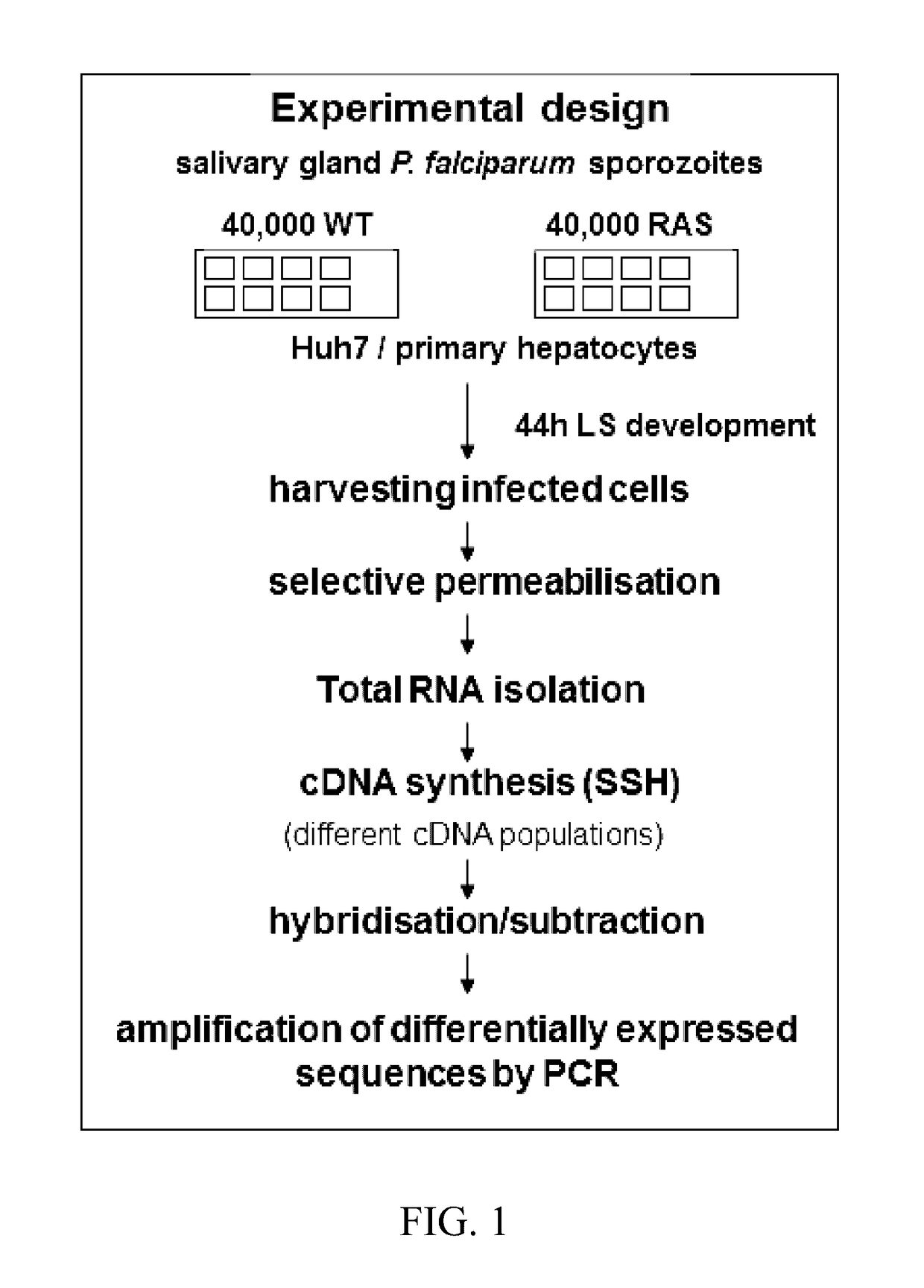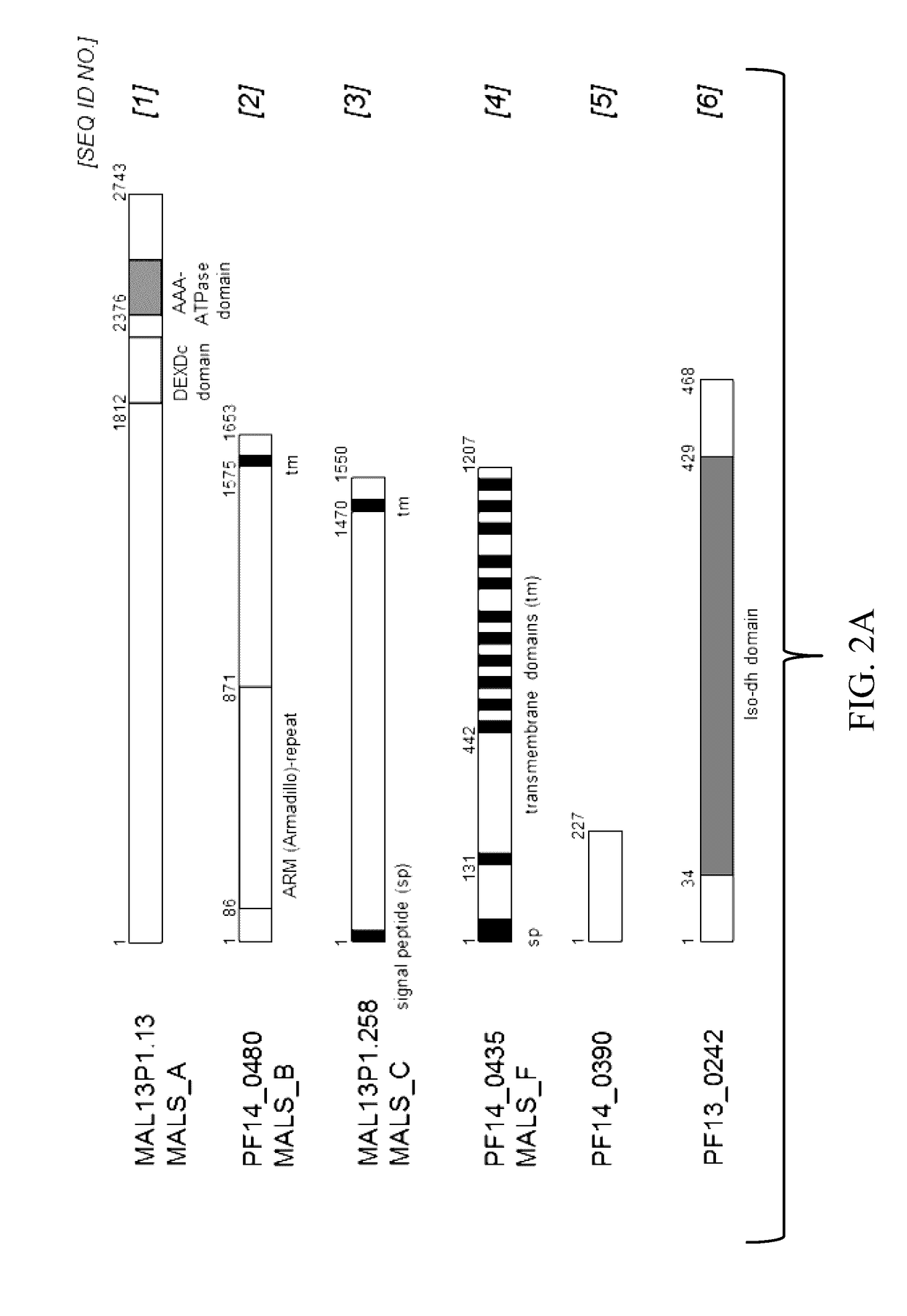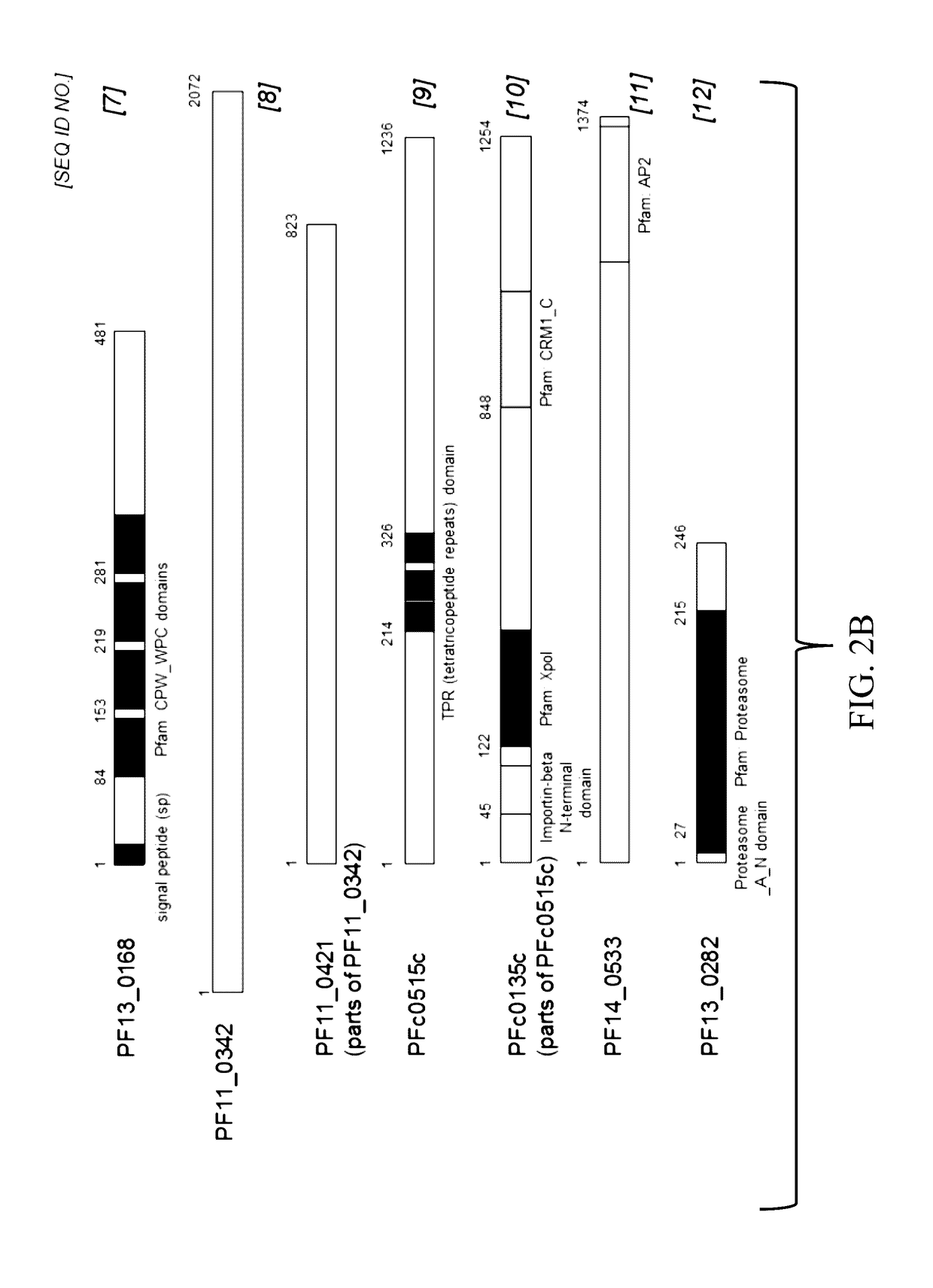Malaria Vaccines Based on Pre-Erythrocytic Antigens From P. Falciparum
a technology of erythrocytic antigens and malaria vaccines, which is applied in the field of malaria vaccines based on preerythrocytic antigens of p. falciparum, can solve the problems of genetic uncertainty of parasites, affecting the effect of antigens,
- Summary
- Abstract
- Description
- Claims
- Application Information
AI Technical Summary
Benefits of technology
Problems solved by technology
Method used
Image
Examples
example 1
Identification of Potentially Immunogenic Antigens in the Liver Stages Of P. falciparum by a SSH Screen
[0117]It has been shown that immunisation with attenuated parasites confer sterile protection in mice (RAS and GAP) and also in humans (RAS). By applying the SSH (suppressive subtractive hybridisation) technology in order to analyse differentially expressed genes the inventors identified critical / potential targets of protective liver-stage immunity. For that purpose, they compared the transcriptional profile of liver stages from wildtype and attenuated (RAS) parasites, i.e. the cDNA populations of the protected RAS forms and the unprotected WT forms. Their modified suppressive subtractive hybridisation (SSH) screening (FIG. 1) allowed selective enrichment of differentially regulated cDNAs of high and low abundance that are exclusively present in one population. A combination of hybridisation and PCR amplification steps allowed simultaneous normalisation and subtraction of the cDNA ...
example 2
Validation of Upregulation of RAS-Specific Antigens by Quantitative RT-PCR
[0120]The results obtained from the differential expression analyses (Suppression Subtractive Hybridisation screening) have been validated by performing quantitative Real-time PCR (qRT-PCR) for selected antigens. Total RNA isolated from P. falciparum wildtype and radiation-attenuated (RAS) liver stage parasites have been used to quantify the respective transcripts in both populations. Plasmodium liver stages were obtained by infecting cultured primary human hepatocytes with P. falciparum salivary gland sporozoites (strain NF54, Prof. Robert Sauerwein, Nijmegen, Netherlands; Delemarre BJM & Van der Kaay HJ, Ned. T. Geneesk 123 (1979).
[0121]Infection of host cells was conducted in close collaboration with the laboratory of Prof. D. Mazier at INSERM, Paris (Semblat et al., 2002). Purified human hepatocytes were plated on collagen I-coated wells (2.5×106 cells / well in a 6-well plate) and maintained until infection...
example 3
Presence of Antigen-Specific T Cells Recognising Peptides Derived from Selected Antigen Candidates in Malaria-Exposed Kenyan Adults
[0126]In order to investigate the presence of antigen-specific T cells in malaria-exposed individuals, T-cell responses to peptides from a first selection of antigens MAL13P1.13 (SLICGLYLL (SEQ ID NO:26), ILYSLMINSL (SEQ ID NO:27), LICGLYLLTL (SEQ ID NO:28)), PF14_0480 (VLLEKINVI (SEQ ID NO:29), YLSPNFINKI (SEQ ID NO:30)), MAL13P1.258 (ILHGGVYRL (SEQ ID NO:31), ILFLFILSI (SEQ ID NO:32), LLFINEINKL (SEQ ID NO:33)), and PF14_0435 (FLLLMLVSI (SEQ ID NO:35), SL1SLYIYYV (SEQ ID NO:34)) were tested in semi-immune Kenyan adults in collaboration with Dr. Britta Urban at the Kenyan Medical Research Institute-Wellcome Trust Research Programme (KEMRI). All adults are resident in Junju District, about 60 km north of Mombasa at the Kenyan coast. The area has two high transmission seasons but low-level transmission occurs all year round (infectious bites per year: 23-...
PUM
| Property | Measurement | Unit |
|---|---|---|
| volume | aaaaa | aaaaa |
| volume | aaaaa | aaaaa |
| nucleic acid | aaaaa | aaaaa |
Abstract
Description
Claims
Application Information
 Login to View More
Login to View More - R&D
- Intellectual Property
- Life Sciences
- Materials
- Tech Scout
- Unparalleled Data Quality
- Higher Quality Content
- 60% Fewer Hallucinations
Browse by: Latest US Patents, China's latest patents, Technical Efficacy Thesaurus, Application Domain, Technology Topic, Popular Technical Reports.
© 2025 PatSnap. All rights reserved.Legal|Privacy policy|Modern Slavery Act Transparency Statement|Sitemap|About US| Contact US: help@patsnap.com



